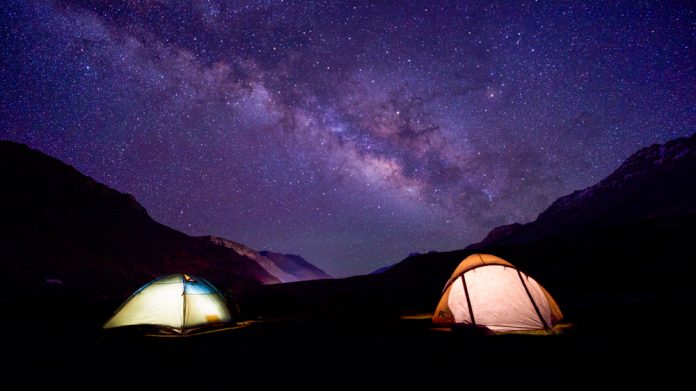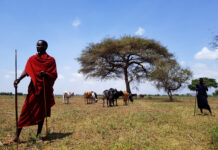His suggestions: flying out to meteorite craters and lying on a mattress in the middle of the desert.
Text Rachel Genevieve Chia
Amar Sharma might not be a household name yet – but it is written in the stars. Hailing from humble Bangalore, Sharma is India’s first amateur astronomer to discover a star without professional assistance, and one of the few Asians to have an asteroid named after them – as a tribute to his lifelong journey inspiring the citizens of India to look up at the night sky.
In an exclusive interview, he shares with ASIAN Geographic his thoughts on the future of astrotourism in the region.

Not many know about the ins and outs of astronomy. How would you explain what you do?
Currently, I’m a comet historian. I’m crazy about comets! I always wanted to be a visual comet hunter, and I still believe there are comets out there with my name on them, waiting to be discovered.
Over the last decade and a half, I’ve been involved in developing astronomy in India in areas like public outreach and communication, astrosketching and dark sky conservation. I’m currently working on two projects: a book on amateur astronomy and an encyclopedia on comet hunters of the 20th century. I want to create the world’s best astronomy farm in India and bring observational astronomy into the Indian education system.
For me, the most important thing in my life is the night sky. From a young age I always wanted to make a living as an amateur astronomer. This is something impractical in Indian society, but I am pushing through with this dream every day.
How did you get into astrotourism?
In 2015, I felt the urge to explore every area of the planet to see every piece of the night sky and share it with others, so – with some creativity and lot of research – I launched my own company, Skyward with AstronAmar. My mission is to make astronomy a primary part of mainstream tourism both globally and in India.
Astronomy is often considered ‘stargazing’ and plays a minor part in tourism, but I really want to overturn this stereotype. I want people to not, say, recall Africa just for its wildlife, Canada for its landscapes, Asia for its geographical features, remote islands for their pristine beaches, but all of them first for their glorious night skies and later their terrestrial features.

What do you think about the state of Astrotourism in Asia?
The public is only just beginning to warm up. Most people think astronomy means black holes, extraterrestrial life, or time travel, because that is so often portrayed in Sci-Fi movies. Also, we don’t have many private amateur observatories open to the public compared to the US, Australia or even Africa.
Regardless, I still feel optimistic. When you look at the expansive land masses of Asia, they reveal themselves to be ‘naked-eye observatories’ of their own kind, with literally no light pollution – which is quite a luxury, isn’t it? Think about the Gobi Desert or Altai Mountains in Mongolia, the frigid Siberian expanses, the Russian Ural or Caucasus Mountains, the deserted stretches of Turkmenistan or Kyrgyzstan, the Takla Makan Desert of China, even the vast Ladakh region of north Indian Himalayas. They are the landscapes where astrotourism can flourish, once people understand their beauty.
One good idea is to visit meteorite impact craters in Asia. They’re actually already frequented by geologists and visitors studying them from land or witnessing them by air, like Lonar, Ramgarh and Dhala in India, Lake Kara-Kul in Tajikistan, Macha in Russia, Wabar in Saudi Arabia and Tabun-Khara-Obo in Mongolia. Another idea is to go to archaeoastronomy sites rich in indigenous folklore.
What ways are you thinking about changing the astrotourism game?
Visiting far-off, private, state-of-art observatories is quite common. But I want to push that to extreme camping in the wilderness. Remote island tours and sky observation from cruises is another possibility. Also meteorite-crater viewing: from simple ground tours for students to chartered flights for more inaccessible craters.
Another ongoing project is to set up big public observatories across Asia to boost awareness, education and astrotourism. I want to give citizens the chance to look up at the skies of their own land. I want to help anyone, anywhere – schools, institutions, resorts – to setup astronomical facilities. I’ve also created a three-year introductory course to observational astronomy for high schools that will let students come up with their own research papers.
Eventually as Skyward with AstronAmar grows, my personal objective is to employ more amateur astronomers in the industry, judging them on their aptitude and passion instead of academic qualifications alone. The astrotourism sector in Asia indeed has a bright future ahead – but only if people continue to welcome and embrace it.

How does it feel like to have an asteroid named after you?
In the field of astronomy, an asteroid is named after someone as a token of appreciation for their work in the field. I consider having a large rock in space officially named after you equivalent to a lifetime achievement award, for reasons apparent.
Being named after an asteroid was something I was frankly expecting only after crossing 60. But my veteran friend David H. Levy, who discovered the legendary Comet Shoemaker-Levy 9 in 1993, named one of his discoveries (2004 TV 69) after me in April 2014. The asteroid is now officially named “380607 Sharma”. Situated in the Asteroid Belt, it is very faint, even with a professional telescope and ccd camera. For Levy, he must have seen something unique in my fervour and passion towards amateur astronomy. At 29, it was quite a shock – and an inexpressible honour.
David was always an inspiration to me. Now he’s forged a permanent bond between us, flying out there 2.5 Astronomical Units from home turf – to remain long after I’m gone!
Tell us about your favourite stargazing spots.
In India, definitely the Himalayas. The sky there is considered one of the very darkest on Earth – at the extreme end of the Bortle scale. The high terrain ensures one of the most transparent skies you could ever hope to see – even for professional observation. Don’t be surprised by the Milky Way band casting shadows on the ground!
The Western Ghats of South India are breath-taking too. You get glimpses of the southern constellations like Crux, Carina, Centaurus, Ara, Norma, etc., and there are spice and coffee plantations for nature lovers.
The Thar Desert, also known as the Great Indian Desert, is another beautiful place to observe dark skies in India. It’s almost entirely free from light pollution.I suggest lying down on a mattress on the sand dunes and basking in the light from the countless, densely-packed stars. Sailing around the Andaman and Nicobar Islands is also a fantastic option for watching the sky from a boat or on the beaches, if you’re an ‘oceanophile’.
This piece is part of a series on astrotourism. To read our exclusive feature, see ASIAN Geographic Issue 129: Science and Technology. To find out more about Amar, view his Linkedin profile here.











